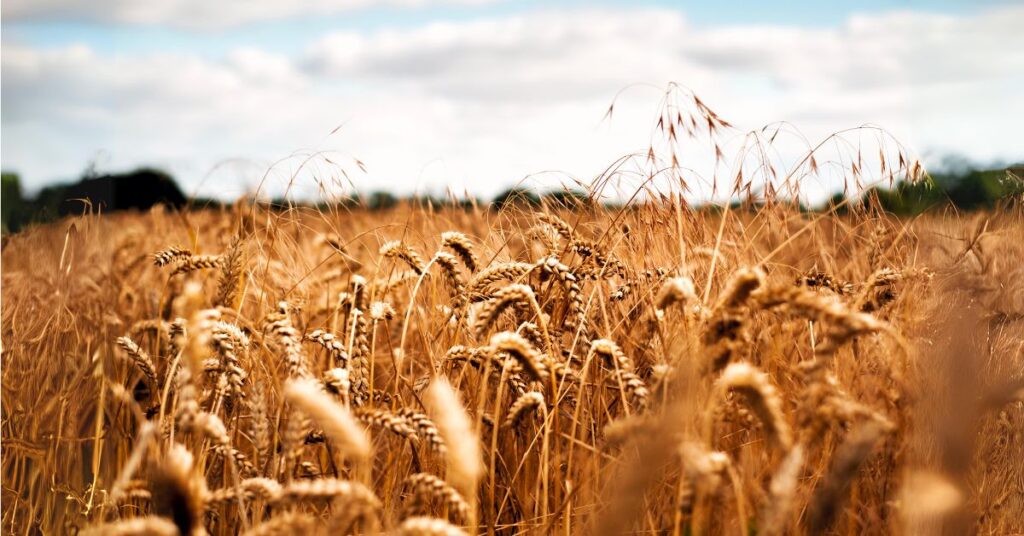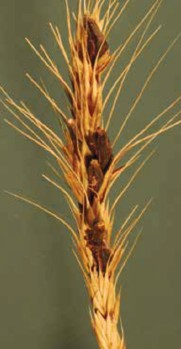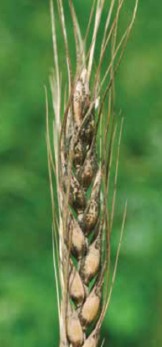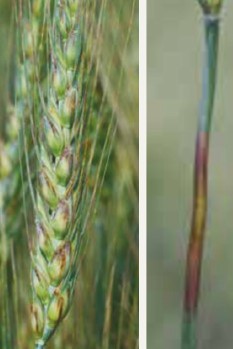
Head disease of wheat is one of the numerous challenges due to it’s ability to significantly impact wheat yield and quality. Exploring what causes these diseases, how to treat them, and the impact they have on overall production, will allow you to begin the process of creating effective management strategies to ensure a sustainable future in wheat production.

FUSARIUM HEAD SCAB
- Look for white portions or sections of the head 18-21 days after the start of flowering.
- Base of glumes often will have orange/pink spores at base.
- Spores infect between flowering and soft dough.
- The fungus can produce mycotoxins that reduce grain quality.
- Spray FHB fungicide between flowering and 10 days after start of flowering.
- Harvest fields early and dry to <15% moisture.
ERGOT
- Dark purple to black hard fungal structures where kernels should be.
- Dark fungal structures are present in grain after harvest.
- Can reduce grain quality and yield, but rarely occurs.
- Fungicide seed treatments and planting certified disease free seed greatly reduces disease risk.


STAGONOSPORA GLUME BLOTCH
- The fungus can infect leaves, but foliar symptoms may be absent with symptoms on the head.
- Look for purple lesions on the tip of the glume.
- Stem is not affected.
- FHB fungicide applications will control this disease.
- Rotation, residue management, and variety selection also can help with disease.
SOOTY MOLD
- Visible in mature fields that have sat in wet weather for many days.
- Generalistic fungi grow superficially on senesced glumes and tissues, but do not impact grain.
- Not yield limiting.
- Presence indicates need for harvest soon.


BLACK CHAFF
- Glumes are purple to brown.
- Awns often also purple and discolored.
- May observe streaks that run down glumes.
- Stems may be discolored.
- Not yield limiting.
LOOSE SMUT
- Black powdery fungal spores completely replace grain in head.
- Common in bin run wheat and volunteer wheat.
- Using certified disease free seed and fungicide seed treatment greatly reduce likelihood of observing this disease

Images from this post are from KSU Extension. Information from this post are from GROWMARK, Inc. Agronomy Services.

